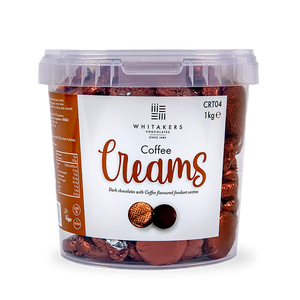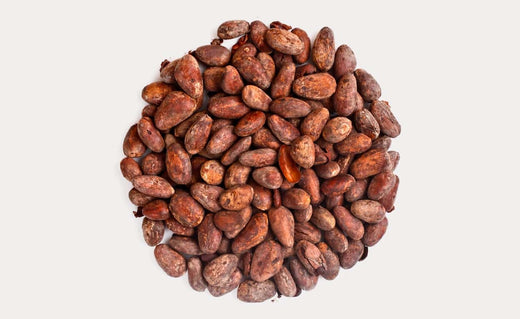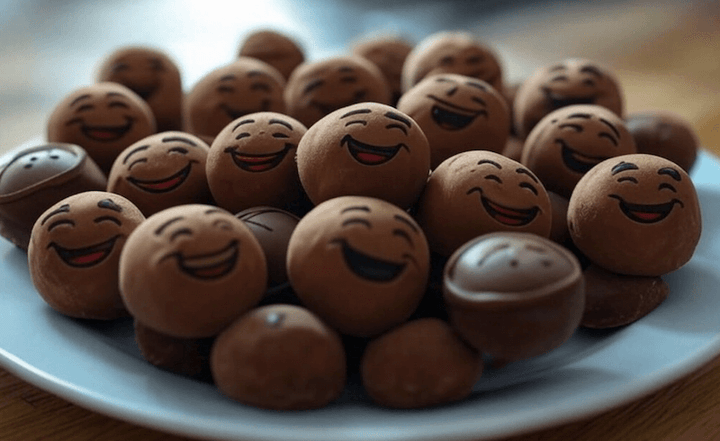Ever wondered what goes into making your favourite bar of chocolate?
Spoiler alert: it's not just a simple pour-and-set process!
The journey from cocoa bean to the silky-smooth chocolate we enjoy is a complex, labour-intensive one.
It starts in far-flung tropical locations, where cocoa trees flourish, and ends in factories where those cocoa beans are transformed into the delightful treat we all adore.
In this post, we'll delve into the fascinating world of chocolate-making, answering a question many chocoholics have likely pondered: "How many cocoa beans does it take to make a pound of chocolate?"
Join us as we trace the journey of the humble cocoa bean, shedding light on the effort and resources required to create the indulgent chocolate bars that we often take for granted.
How Many Cocoa Beans To Make A Pound Of Chocolate?
On average, it takes about 400 to 450 cocoa beans to produce a single pound (around 0.45 kilograms) of chocolate.
This number can vary slightly depending on the size of the cocoa beans, the specific type of chocolate being produced, and the particular processing methods used.
The entire process involves several steps, including harvesting the beans, fermenting and drying them, roasting and grinding, and finally, blending with other ingredients to create the finished product.
Related Post: Chocolate Conching?
What Are Cocoa Beans?
Cocoa beans are the seeds found inside the fruit of the cacao tree (Theobroma cacao), which is native to Central and South America but now grown in many tropical regions across the globe.
The term 'cacao' generally refers to the raw material, while 'cocoa' is often used to refer to processed products.
The cacao tree bears large, oval-shaped fruits, commonly known as cacao pods.
Each pod contains 20 to 60 seeds or 'beans', surrounded by sweet, pulpy fruit.
The pods are harvested manually, and then the beans and pulp are removed.
The harvested beans undergo a two-step process of fermentation and drying, which develops the beans' characteristic chocolate flavour.
After this, the beans are usually roasted to bring out their full flavour before being processed further to create cocoa solids and cocoa butter – the two main components of chocolate.
In essence, cocoa beans are the very heart of our beloved chocolate and play a crucial role in determining its flavour, quality, and texture.
So, next time you enjoy a piece of chocolate, spare a thought for the humble cocoa bean and its fascinating journey from a tropical tree to a tasty treat.
Related Post: What is Chocolate Blooming?
How is Chocolate Made?
The process of chocolate making is a delicate and complex journey that starts on a cacao tree and ends in a delicious bar of chocolate.
Here's a simplified breakdown of the steps involved:
-
Harvesting: Cocoa pods are harvested manually from the cacao tree. The pods are split open to reveal the cocoa beans inside, which are surrounded by a sweet, pulpy white fruit.
-
Fermentation: The beans and the pulp are scooped out of the pod and left to ferment for several days. This fermentation process is crucial as it helps develop the beans' rich chocolatey flavour.
-
Drying: After fermentation, the beans are dried to prevent mould growth. This usually involves spreading them out in the sun for about a week.
-
Roasting: The dried beans are roasted at a chocolate factory, a step that further develops their flavour. The roasting temperature and time can greatly affect the flavour of the chocolate.
-
Winnowing: After roasting, the beans are winnowed to remove the outer shells, leaving only the 'nibs'.
-
Grinding: The nibs are then ground down, producing a thick paste known as chocolate liquor. Despite its name, chocolate liquor is non-alcoholic; it's simply a mixture of cocoa solids and cocoa butter.
-
Conching: The chocolate liquor is heated and stirred in a process called conching. This can last from a few hours to a few days, refining the chocolate and enhancing its flavour.
-
Tempering: The chocolate is cooled and then slowly reheated to a specific temperature. This process, known as tempering, gives the finished chocolate its characteristic shine and snap.
-
Moulding: Finally, the tempered chocolate is poured into moulds and left to set, turning into the chocolate bars that we recognise and love.
-
Packaging: Once the chocolate bars have hardened, they are packaged and ready to be distributed.
It's important to note that the exact process can vary depending on the type of chocolate being produced (dark, milk, or white) and the specific practices of the chocolate maker.
But at its core, this is the incredible journey from cocoa bean to chocolate bar.
Where Can You Buy Excellent Cooking Chocolate?
If you're looking for excellent cooking chocolate, look no further than Whitakers Chocolates' Easymelt.
With a high cocoa content of 55%, this superior-quality dark chocolate couverture has been specially designed for a myriad of culinary uses.
It's ideal for melting, dipping, decorating, flavouring and a whole lot more.
What sets Easymelt apart is not just its intense, rich flavour but also its ease of use.
Whether you're a seasoned professional baker or a home cook dipping your toes in the world of chocolate-based recipes, Easymelt is perfect for enhancing your dishes with a touch of chocolatey indulgence.
It melts smoothly and evenly, ensuring a consistently delicious result every time.
Moreover, Easymelt has been created with dietary requirements in mind.
It's suitable for those following a vegan diet and is also gluten-free, making it a versatile choice for a wide range of recipes.
This high-quality cooking chocolate is readily available for purchase on the Whitakers Chocolates official website.
It may also be found in specialist food shops and select larger supermarkets.
So whether you're baking a batch of decadent brownies, creating intricate chocolate decorations, or just making a luxurious hot chocolate, Easymelt is an excellent choice to ensure a superior taste and texture.
Happy cooking!
Related Post: Why Does Chocolate Turn White Sometimes?
Some Notes From an Expert Chocolatier
As an expert chocolatier, I can confidently say that one of the secrets to a great chocolate dish lies in the quality of the chocolate you choose.
In the world of baking and cooking, not all chocolates are created equal - the difference between an average product and a high-quality one can drastically affect the outcome of your recipes.
At Whitakers Chocolates, we've spent generations perfecting our craft, using only the finest ingredients and honed chocolate-making skills to produce chocolates that are not only mouth-wateringly delicious but also consistently high in quality.
This attention to detail and commitment to excellence is what keeps our customers coming back for more, and it's the same principle you should apply when choosing a chocolate for your cooking and baking needs.
When selecting a new chocolate brand, there are a few simple yet crucial rules to follow. First and foremost, look for brands that use top-quality, natural ingredients.
The flavour of the final product is a direct reflection of the quality of the ingredients used, so this is an area where you don't want to compromise.
Secondly, consider the brand's commitment to sustainability and ethical practices.
At Whitakers, we're always seeking ways to improve sustainability in our production processes, and we use Fairtrade cocoa to ensure that our products are not only delicious but also ethically produced.
The chocolate industry has a significant impact on communities and environments around the world, and it's important to support brands that are working to make that impact positive.
In summary, while the art of cooking and baking with chocolate may seem complex, choosing the right product to start with can make all the difference.
With high-quality, ethically produced chocolate like our Easymelt couverture, you're well on your way to creating truly sensational chocolate dishes. Happy baking!
Final Notes On How Many Cocoa Beans To Make One Pound Of Chocolate?
The journey from cocoa bean to chocolate bar is a truly fascinating one, steeped in skill, tradition, and a profound appreciation for the beauty of natural ingredients.
The humble cocoa bean, harvested from the cacao tree and painstakingly processed, plays an integral role in the creation of the chocolate treats we all enjoy.
The surprising fact that it takes approximately 400 to 450 cocoa beans to make just one pound of chocolate further highlights the intense effort and resources involved in the chocolate-making process.
So, the next time you enjoy a piece of chocolate, remember the hundreds of cocoa beans, the meticulous craftsmanship, and the dedication to quality that went into creating it.





















